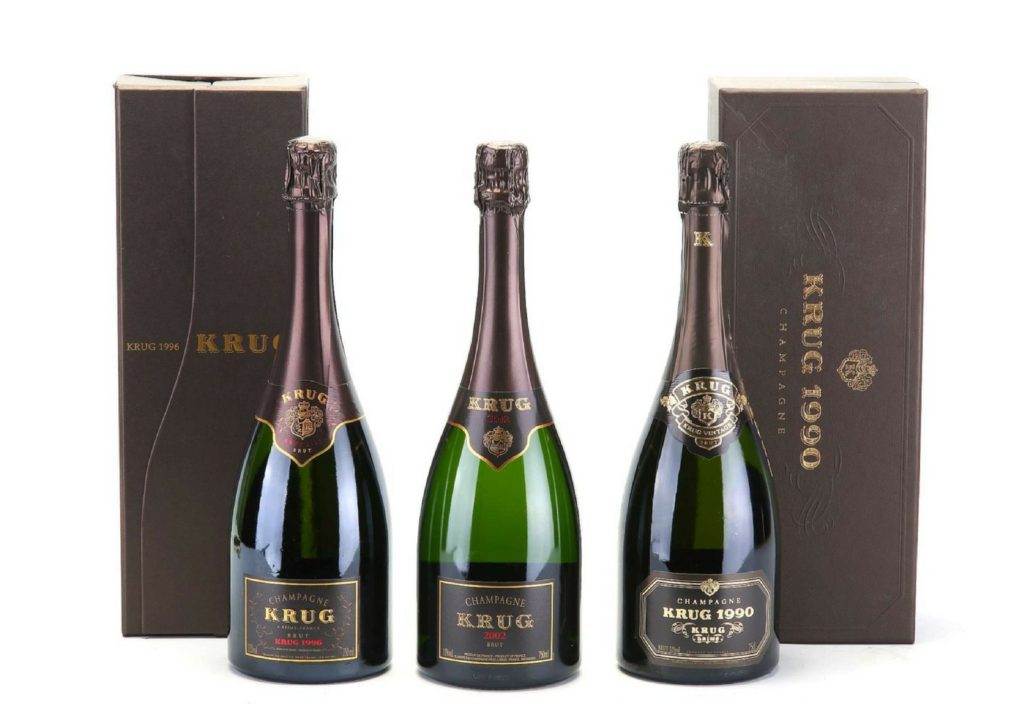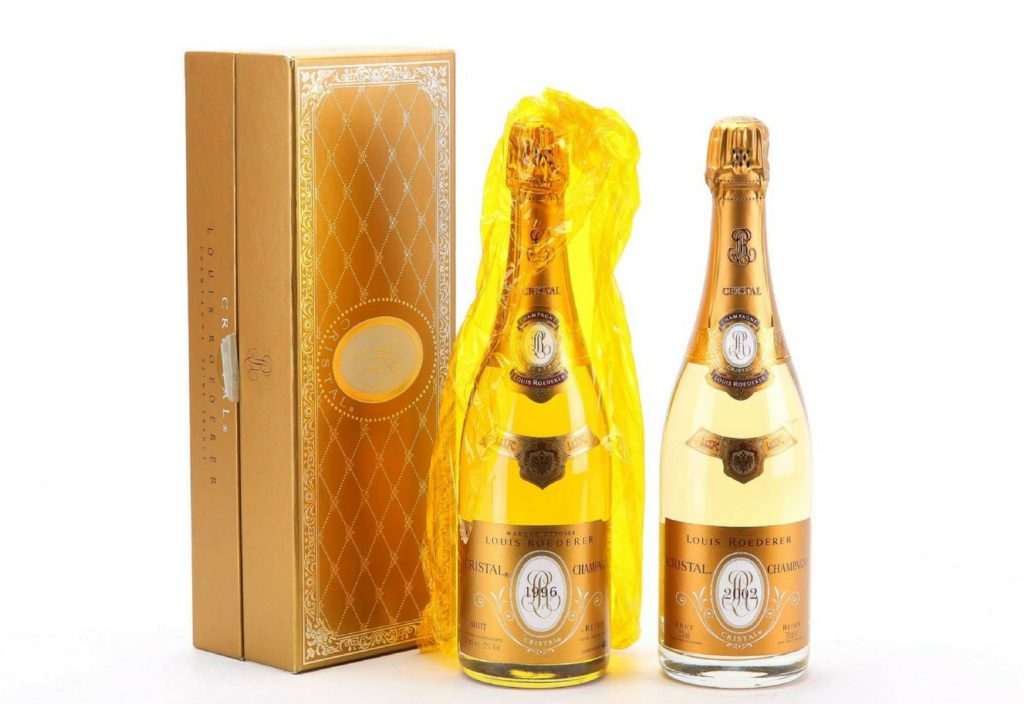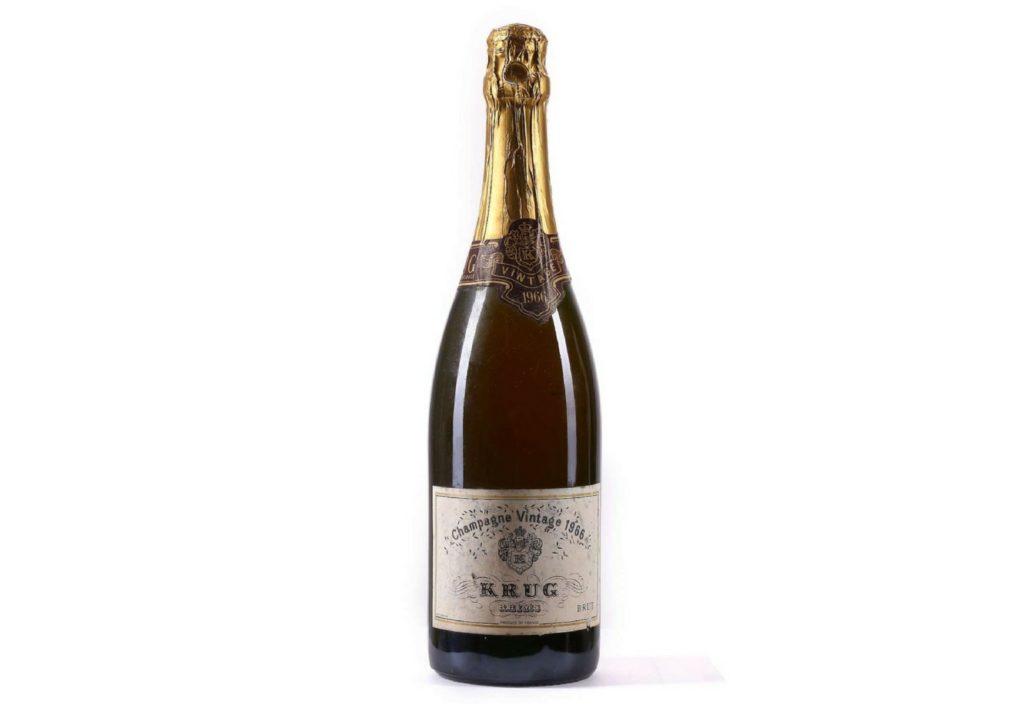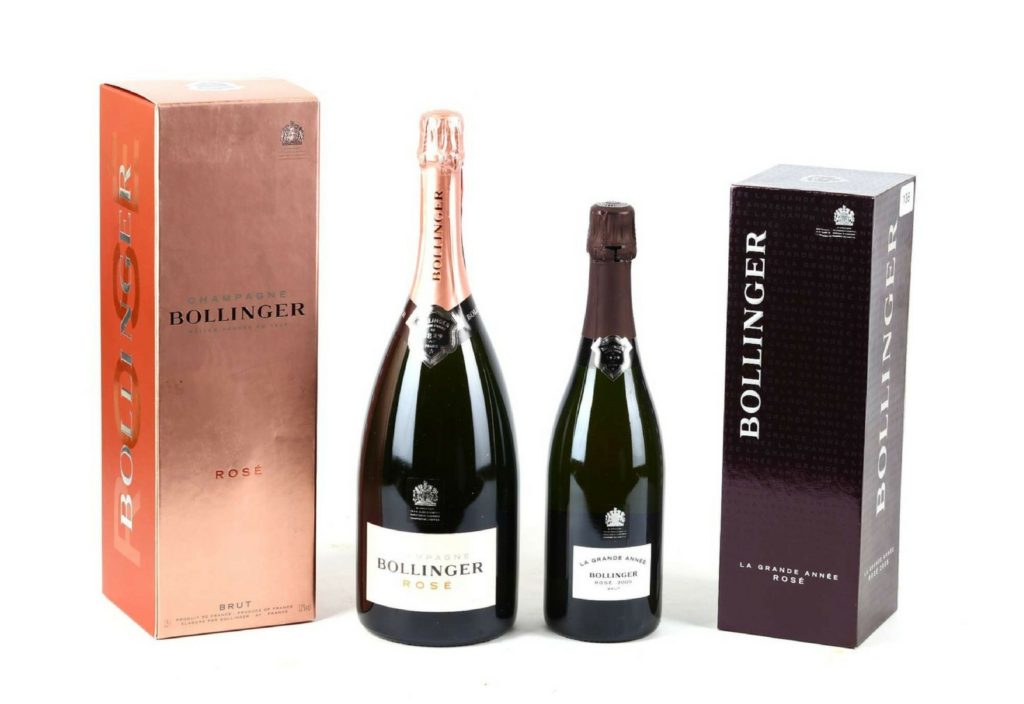Finding the perfect match – Champagne and Food pairings
16/11/2017 Chiswick Curates, Wine & Spirits
 Lot 319. Krug Champagne 1990 In presentation carton (1) 1996 In presentation cartons (2) 2002 (2). Estimate: £1,150-£1,450.
Lot 319. Krug Champagne 1990 In presentation carton (1) 1996 In presentation cartons (2) 2002 (2). Estimate: £1,150-£1,450.
Ahead of the Wine & Spirits auction on 21st November, Head of Wine & Spirits Peter Mansell explores the best champagne and food pairings and proves that this sparkling wine is not just for special occasions. Authentic champagne is produced in the Champagne region in northeastern France and while sparkling wines are produced across the globe, only those produced in this region are able to be recognised as champagne and the name is protected by EU law.
When we hear the word champagne we tend to think of receptions and canapés and while it is undoubtedly a wonderful start to the evening, its rich layers of flavour and varying levels of acidity and texture make it one of the most versatile and superb food wines, guaranteeing plenty of opportunities for different pairings.
'Come quickly, I am tasting the stars’ - Dom Pérignon.
\n
Lot 317. Dom Pérignon Champagne. Moet et Chandon 1990 One in presentation box. One with damaged foil and slightly damaged label (2) Oenotheque 1996 In original presentation box. Disgorged 2008 (1) 1996 In original presentation boxes (2) 1998 In original presentation box (1). Estimate: £850-£1,050.
The features that make champagne wonderful for matching with food is its high level of acidity and the bubbles that both enhance the flavours of food and effectively cleanse the palate. The acidity is a result of the grapes used to make champagne, which are grown in a cold climate and picked earlier than those used for still wine. This results in a tart quality that cuts through rich foods such as smoked salmon or cheese. Acidic dishes or dressings can be problematic with wine, but the high acidity of champagne means it is well-suited to such foods.
Lot 318. Bollinger Champagne Grande Annee RD 1990 In original wooden case. Disgorged 22/2/05 (1) Grande Annee 1990 In presentation boxes, one damaged (2). Estimate: £450-£600.
Non-vintage champagne is required to age on the dead yeasts that cause the second fermentation in the bottle and the fizz for a minimum of 12 months, whereas vintage champagne is three years, although they are often aged for much longer. The most valuable champagnes are the single-vintage ‘prestige cuvées’ that have unique flavours and include Krug Clos du Mesnil, Clos d’Ambonnay, Louis Roederer’s Cristal, Dom Pérignon and Salon Le Mesnil, which are renowned for their striking balance of acidity, long-lasting flavour and ageability.
An aged, vintage champagne that has developed a rich and nutty quality pairs well with ‘umami’ dishes – a Japanese concept first discovered in 1908 and identified as MSG, one of the most common amino acids found in seaweed, soup stocks, preserved fish, aged cheeses, lamb or beef, cured meats and mushrooms. It is preferable for champagnes such as these to be served in wine glasses rather than flutes so that the appeal of their complex and suggestive flavours can be maximised. Temperature should also be a consideration; ideally chilled vintage champagne should be left to warm a little as an ice-cold glass does not reveal its full bouquet.
Lot 321. Cristal Champagne. Louis Roederer 1996 In presentation carton (1) 2002 (1). Estimate: £360-£450.
Sparkling wines come with varying dosage, or residual sugar levels: Zero Dosage, Extra-Brut, Brut, Extra-Dry, Sec, Demi-Sec and Doux. With no sugar added, Zero Dosage is more pared down and a good accompaniment to sashimi. On the other end of the scale is Demi-Sec or Doux, the latter of which has more than 50 grams of residual sugar per litre. Favoured by Russian Tsars, these sweeter champagnes are complemented by afternoon tea or desserts such as fruit tart or berry-based pavlova.
Lot 301. Krug 1966 One slightly damaged foil. Lightly bin-soiled labels (2) Mumm de Cramant Blanc de Blancs Believed 1970s Lightly bin-soiled label (1). Estimate: £750-£950.
Rosé champagne is often more expensive because its produced in smaller quantities and its riper quality is a good match for seafood such as lobster. Blanc de Blancs champagnes, made from chardonnay alone, are well suited to starters, salads or other lighter dishes, butter-sauced fish or creamy cheeses. In contrast, Blanc De Noirs champagnes made from the red grapes Pinot Noir and Pinot Meunier are characteristically more full-bodied and complement rich, heartier dishes such as game with red fruits.
Lot 328. Bollinger Rose 2005 In original presentation carton (1) Bollinger Rose NV In original presentation carton magnum (1). Estimate: £100-£150.
As a general rule, champagne should not be paired with extremes of sweetness or spice and it is best to either mirror the flavours of the champagne and food or match contrasting flavours that cooperate to create harmony.